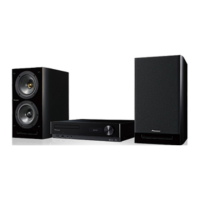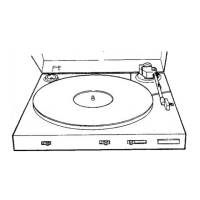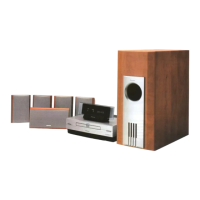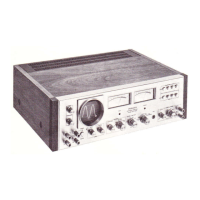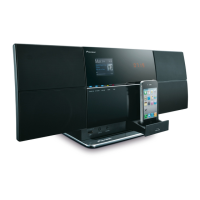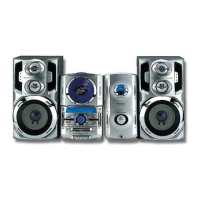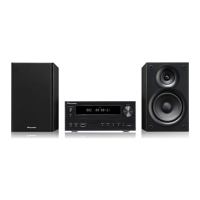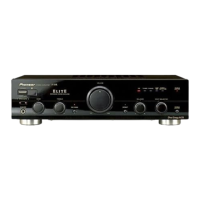What does it mean when 'AMP ERR' blinks and the Pioneer Stereo System turns off?
- AasmithSep 12, 2025
The receiver probably has a serious problem. Don't try to turn on the receiver. Call a Pioneer-accredited repair center to look at the problem.
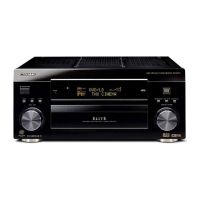
What does it mean when 'AMP ERR' blinks and the Pioneer Stereo System turns off?
The receiver probably has a serious problem. Don't try to turn on the receiver. Call a Pioneer-accredited repair center to look at the problem.
What does it mean when 'FAN STOP' blinks and the Pioneer Elite VSX-53TX turns off?
Something is stuck in the fan and/or the fan is broken. Remove the foreign object from the fan. If you can't do this and/or the fan is broken call a Pioneer-accredited repair center to look at the problem.
What to do if 'OVERHEAT' blinks on my Pioneer Elite VSX-53TX and there is no sound output?
The receiver has gotten too hot. Turn the receiver off and allow it to cool down with good ventilation.
Why doesn't the digital format indicator light up when playing a non-PCM digital source on my Pioneer Stereo System?
Play the source, if the player is paused or stopped. Fix the audio settings (check the manual that came with your DVD player), if there is a mistake in the player settings for audio output.
Why can't I operate other components with the Pioneer Elite VSX-53TX Stereo System remote?
The preset code settings may be wrong; input the correct preset code. If the batteries wore out, reset the proper system settings.
Why can't I operate connected components with the remote when the SR cable is connected to my Pioneer Stereo System?
Reinsert the SR cable, making sure it is the right jack. Make sure an analog connection has been made between the units. If the component you have hooked up is not SR compatible this is not a malfunction.
What does it mean when 'THDCT NG' blinks and the Pioneer Elite VSX-53TX turns off?
The thermistor (temperature sensor) is broken. Turn the receiver off, unplug from wall and call a Pioneer-accredited repair center to look at the problem.
How to turn on my Pioneer Elite VSX-53TX Stereo System?
First, ensure the power plug is securely connected to the wall outlet. If it still doesn't turn on, the protection circuit may have been activated. Disconnect the power plug from the outlet, wait a few seconds, and then reinsert it.
Why is there no sound from the surround back speakers on my Pioneer Elite VSX-53TX?
Ensure the SB CH MODE is set to ON or AUTO. If the source is not a 6.1 channel playback source, still set the SB CH MODE to ON or AUTO and choose one of the SURROUND listening modes. Check all connections to the surround back speakers. If using only one speaker, connect it to the surround back left channel output.
Why doesn't audio record on my Pioneer Stereo System?
You can only record analog to analog, or digital to digital. Ensure the playback and recording components are hooked up with the same kind of connections. You can't record digital sources that have been copy protected. Check that the jacks for recording have been connected properly.
| Brand | Pioneer |
|---|---|
| Model | Elite VSX-53TX |
| Category | Stereo System |
| Language | English |
Automated system for optimal surround sound setup.
Supports Dolby Digital EX, DTS-ES, DTS 96/24 and more.
Compatibility with DVD Audio and SACD sources.
Automates power-on of connected equipment.
Enhances audio reproduction for wider dynamic range.
Low standby power consumption.
Verify all included accessories are present for setup.
Instructions for loading batteries into the remote control.
Understanding the effective range and conditions for remote operation.
Proper placement and ventilation for the receiver unit.
How to access the front panel controls and features.
Understanding key factors for surround sound setup.
Connecting DVD players and TVs for optimal audio/video.
Detailed instructions for connecting all speakers.
Setting up the main unit and configuring digital inputs.
Step-by-step guide for automatic speaker calibration.
How to achieve surround sound playback from DVDs.
Guide for hooking up your television to the receiver.
Instructions for linking DVD players, VCRs, and other video devices.
How to connect audio sources using analog cables.
Guide for linking digital audio sources via optical/coaxial.
Instructions for connecting FM and AM antennas.
Detailed instructions for connecting speaker systems.
Information on setting speaker impedance and bi-wiring.
Guidelines for optimal speaker positioning and power hookup.
Explanation of buttons and indicators on the receiver's front panel.
Comprehensive guide to all buttons on the remote control.
Meaning of various indicators shown on the receiver's display.
Description of all input and output terminals on the rear panel.
Selects how surround back speakers will be utilized.
Manual adjustment of surround sound parameters.
Specifies speaker types, sizes, and subwoofer usage.
Precise balancing of individual speaker output levels.
Adjusting speaker distances for sound depth and separation.
How to play sound sources and select playback modes.
Choosing the correct input for analog or digital sources.
Explanation of MOVIE, MUSIC, and STEREO listening modes.
Details on various MOVIE surround sound modes.
Explanation of MUSIC listening modes for immersive sound.
Customizing sound effects, center width, and delay.
Using Digital Noise Reduction, MIDNIGHT, and LOUDNESS modes.
Adjusting bass, treble, and audio delay for optimal sound.
Using Audio Scaler and Multi Channel In for enhanced audio.
Configuring surround back channels and virtual surround modes.
Using dual mono settings and connecting headphones.
Switching video inputs and adjusting display brightness.
Steps for tuning FM and AM radio stations.
How to tune directly to a specific radio frequency.
Storing favorite stations and assigning custom names.
Accessing stored radio stations.
Programming the remote to control other devices.
Teaching the remote new commands from original remotes.
Button functions for controlling various components.
Configuring direct function for external video sources.
Instructions for recording audio and video between components.
Setting up a second zone for independent stereo playback.
Adding external amplifiers to enhance system power.
Setting up and controlling audio in multiple rooms.
Operating Pioneer components via receiver's remote sensor.
Creating custom sequences of operations for the remote.
Programming a single button to turn off multiple components.
Erasing multi operation, learning, or all remote settings.
Restoring receiver settings to factory defaults.
Configuring decoding methods for THX CINEMA mode.
Mapping digital audio sources to receiver inputs.
Reassigning component video inputs for different sources.
Renaming input functions for easier identification.
Configuring the 12V trigger for automatic component power-on.
Accessing advanced settings for surround sound optimization.
Setting frequency cutoff points for subwoofer and speakers.
Precise balancing of individual speaker output levels.
Adjusting speaker delay for improved sound depth and separation.
Customizing room acoustics and speaker response with EQ.
Limiting peak bass levels to prevent distortion.
Compressing dynamic range for better low-volume listening.
Explanation of Dolby Digital, Pro Logic II, and Surround EX.
Details on DTS, DTS-ES, DTS Neo:6, and DTS 96/24.
Explanation of THX Re-Equalization, Adaptive Decorrelation, etc.
Solutions for power, playback, response, and error messages.
Resolving issues with sound output, video display, and connections.
Fixing remote control, SR cable, and subwoofer output problems.
Technical details and performance specifications of the receiver.


